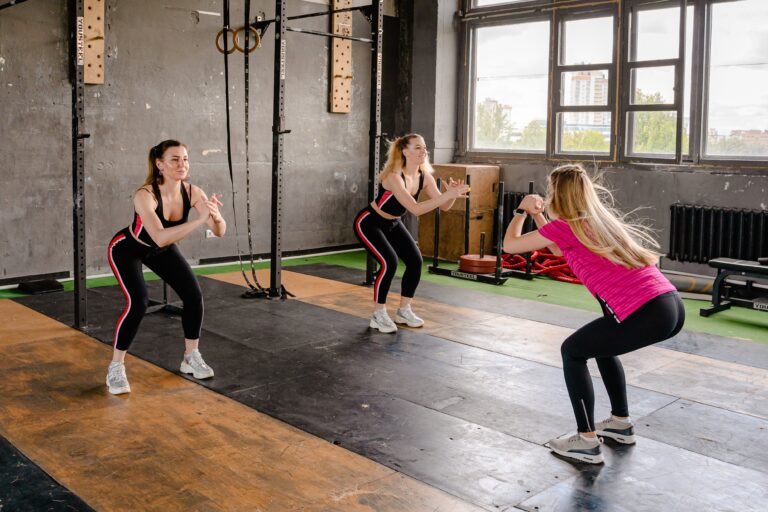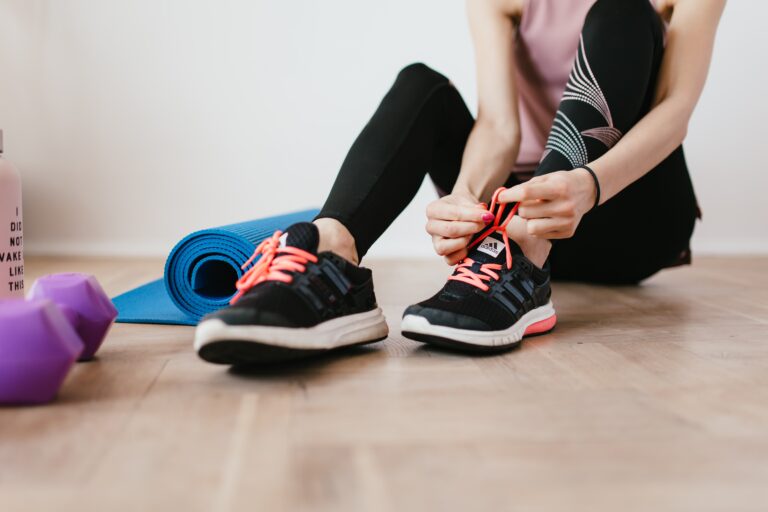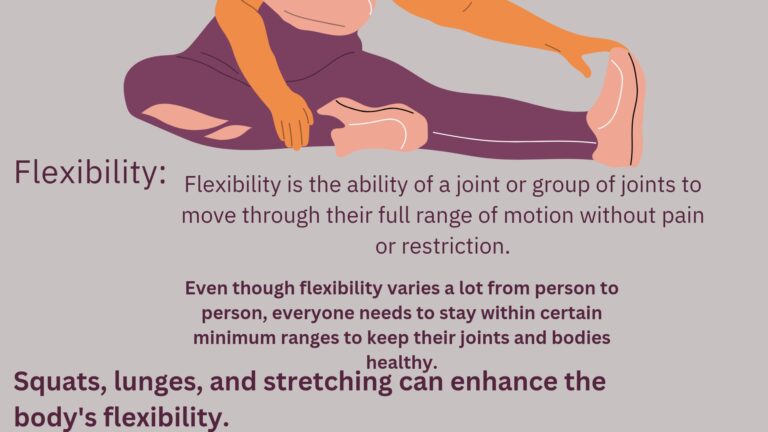Getting Fit Has Never Been Easier

Introduction
Absolutely! Here’s an introduction to a 30-day exercise plan designed to help you achieve your fitness goals:
“Welcome to our 30-Day Exercise Plan, crafted to make your fitness journey enjoyable and achievable. This plan is designed for individuals of all fitness levels, whether you’re a beginner or someone looking to challenge themselves further.
With a combination of strength training, cardio, flexibility exercises, and rest days strategically incorporated, this program aims to enhance your overall fitness, boost your energy levels, and promote a healthier lifestyle.
Each day of this plan is carefully curated to provide variety and prevent monotony, ensuring you stay motivated and engaged throughout the entire 30 days. Whether it’s bodyweight exercises, yoga poses, brisk walks, or high-intensity workouts, you’ll find a diverse range of activities to keep things interesting.
Remember, consistency is key. Stick to the plan, listen to your body, and most importantly, enjoy the journey toward a fitter, healthier you.
Let’s kickstart this incredible 30-day journey together!”
Feel free to add specific details about the exercises, schedule, and any other relevant information you want to include when developing the full exercise plan.
The Importance of Regular Exercise
Regular exercise is integral to maintaining a healthy lifestyle, offering numerous benefits that positively impact both physical and mental well-being. Here are some key points highlighting the importance of regular exercise:
- Physical Health Improvement: Engaging in regular exercise helps in weight management by burning calories and building muscle. It reduces the risk of chronic diseases such as heart disease, high blood pressure, type 2 diabetes, and certain cancers.
- Boosts Mental Health: Exercise is known to release endorphins, the body’s natural mood lifters. It reduces feelings of stress, anxiety, and depression, promoting better mental health and overall well-being.
- Enhances Energy Levels: Regular physical activity increases endurance and strengthens the cardiovascular system, resulting in improved energy levels throughout the day.
- Improves Sleep Quality: Exercise can facilitate better sleep patterns by helping you fall asleep faster and enjoy deeper, more restorative sleep.
- Strengthens Muscles and Bones: Resistance training and weight-bearing exercises contribute to muscle strength and bone density, reducing the risk of osteoporosis and frailty, especially as you age.
- Enhances Brain Health: Physical activity stimulates the release of chemicals that support brain health, improving memory, cognition, and reducing the risk of cognitive decline as you get older.
- Promotes Longevity and Quality of Life: Regular exercise has been linked to increased longevity and a higher quality of life. It enables individuals to maintain independence as they age by preserving mobility and functional abilities.
- Social Benefits: Participating in group activities or team sports can foster social connections and friendships, contributing to a sense of belonging and support.
- Healthy Habits: Regular exercise often leads to the adoption of other healthy habits, such as a balanced diet and better hydration, creating a positive domino effect on overall health.
- Reduced Healthcare Costs: By maintaining good health through regular exercise, individuals may reduce healthcare costs associated with preventable illnesses and chronic conditions.
Incorporating regular physical activity into your routine doesn’t necessarily mean rigorous workouts; even moderate exercise, like walking, dancing, or gardening, can yield significant health benefits. The key is consistency and finding activities that you enjoy and can sustain over time. Always consult a healthcare professional before starting any new exercise regimen, especially if you have any underlying health concerns.
Outlining the 30-Day Exercise Plan

Certainly! Here’s an outline for a comprehensive 30-day exercise plan that combines various types of workouts and activities:
30-Day Exercise Plan Outline:
Week 1: Foundation Building
Day 1 – Day 7:
- Day 1: Introduction to the plan, 20-minute brisk walk or jog
- Day 2: Bodyweight strength training (push-ups, squats, lunges) – 20 minutes
- Day 3: Yoga or stretching routine – 30 minutes
- Day 4: Rest day or light activity (such as leisurely bike ride or gentle yoga)
- Day 5: Interval training (alternating between high-intensity exercises and short rests) – 15 minutes
- Day 6: Active rest (choose an activity you enjoy – dancing, swimming, etc.) – 30 minutes
- Day 7: Moderate-intensity cardio (cycling, brisk walking) – 25 minutes
Week 2: Increasing Intensity
Day 8 – Day 14:
- Day 8: Bodyweight exercises focusing on core (planks, crunches) – 20 minutes
- Day 9: High-intensity interval training (HIIT) – 20 minutes
- Day 10: Flexibility and mobility exercises (yoga or Pilates) – 30 minutes
- Day 11: Active recovery (light walking, easy cycling) – 20 minutes
- Day 12: Strength training with weights or resistance bands – 25 minutes
- Day 13: Cardio workout (running, cycling, or cardio dance) – 30 minutes
- Day 14: Rest day or gentle yoga/stretching session
Week 3: Adding Variety
Day 15 – Day 21:
- Day 15: Circuit training (alternating between strength and cardio exercises) – 25 minutes
- Day 16: Bodyweight exercises for full-body toning – 20 minutes
- Day 17: Active recovery day (hiking, swimming, or any outdoor activity) – 40 minutes
- Day 18: Pilates or barre workout for core and stability – 30 minutes
- Day 19: High-intensity cardio session – 30 minutes
- Day 20: Yoga for relaxation and flexibility – 35 minutes
- Day 21: Rest day or light activity like gentle stretching or a leisurely walk
Week 4: Challenge and Consistency
Day 22 – Day 30:
- Day 22: Tabata training (4-minute high-intensity intervals) – 15 minutes
- Day 23: Strength training with added challenges (increased weights or intensity) – 30 minutes
- Day 24: Cardiovascular endurance workout (running, cycling, or swimming) – 40 minutes
- Day 25: Active recovery day (choose a low-impact activity or enjoy a nature walk) – 45 minutes
- Day 26: Full-body stretching and relaxation session – 25 minutes
- Day 27: HIIT or circuit training incorporating various exercises – 30 minutes
- Day 28: Flexibility-focused session (yoga or Pilates) – 40 minutes
- Day 29: Final challenge day – mix and match different exercises you enjoyed from the previous days – 45 minutes
- Day 30: Celebration day! Choose your favorite workout from the past month and enjoy it to mark the completion of the 30-day plan.
Feel free to adjust the exercises, durations, and rest days based on individual fitness levels and preferences. Always listen to your body and consult a fitness professional if needed before starting any new exercise routine.
Essential Equipment for Home Workouts
Creating a home gym or setting up for home workouts doesn’t necessarily require elaborate or expensive equipment. Here’s a list of essential and versatile items that can support a wide range of exercises and routines:
- Exercise Mat: Provides cushioning and support for floor exercises, yoga, Pilates, and stretching routines.
- Dumbbells: Adjustable dumbbells or a set of various weights allow for strength training exercises targeting different muscle groups.
- Resistance Bands: Versatile and portable, they provide varying levels of resistance for strength training and stretching exercises.
- Jump Rope: Excellent for cardio workouts, improving agility, and enhancing coordination.
- Kettlebell: Ideal for dynamic full-body workouts, offering versatility in strength and cardio training.
- Yoga Blocks and Strap: Helpful for yoga practitioners to deepen stretches and improve alignment.
- Pull-Up Bar: Mountable bars can be used for pull-ups, chin-ups, and other upper body exercises.
- Exercise Ball: Great for core workouts, balance training, and enhancing stability during exercises.
- Foam Roller: Aids in myofascial release, reducing muscle soreness and improving flexibility.
- Medicine Ball: Suitable for dynamic strength exercises, core workouts, and partner exercises.
- Suspension Trainer (e.g., TRX): Offers a full-body workout by leveraging body weight for resistance training.
- Step Platform or Bench: Useful for step aerobics, box jumps, and as an elevated surface for various exercises.
- Fitness Mat or Padding: Protects the floor and provides cushioning for high-impact exercises.
- Ankle Weights or Wrist Weights: Adds resistance to leg or arm exercises, increasing intensity.
- Stability Disc or Balance Board: Enhances balance, stability, and core strength through varied exercises.
Remember, the necessity of specific equipment depends on your fitness goals, preferences, and the type of exercises you plan to incorporate into your routine. Additionally, bodyweight exercises like squats, lunges, push-ups, and planks are effective and require no equipment at all.
Consider starting with a few basic pieces of equipment and gradually expanding based on your needs and interests. Also, ensure you have ample space to move comfortably and safely during workouts. Always prioritize safety and proper form when using any exercise equipment.
Incorporating a Healthy Diet into Your Exercise Plan
Incorporating a healthy diet alongside your exercise plan is crucial for maximizing the benefits of your workouts and overall well-being. Here are steps to integrate a nutritious diet into your routine:
1. Balanced Meals:
- Include Protein: Incorporate lean protein sources like chicken, fish, tofu, legumes, and eggs. Protein aids in muscle repair and growth, essential after workouts.
- Complex Carbohydrates: Opt for whole grains, fruits, vegetables, and legumes to provide sustained energy levels throughout the day.
- Healthy Fats: Include sources like nuts, seeds, avocados, and olive oil. These fats are vital for heart health and can aid in nutrient absorption.
2. Pre- and Post-Workout Nutrition:
- Pre-Workout: Consume a light meal or snack 1-2 hours before exercising. It should contain carbohydrates for energy and a moderate amount of protein to fuel your workout.
- Post-Workout: Aim to eat a balanced meal or have a snack with a blend of protein and carbohydrates within 30-60 minutes after exercising to aid muscle recovery.
3. Hydration:
- Water: Stay hydrated throughout the day. Water is essential for various bodily functions, including regulating body temperature and aiding in digestion.
4. Portion Control and Timing:
- Portion Sizes: Be mindful of portion sizes to avoid overeating. Balancing portions of proteins, carbohydrates, and fats is key.
- Meal Timing: Spread out meals and snacks evenly throughout the day to maintain energy levels and avoid feeling overly hungry.
5. Limit Processed Foods and Sugars:
- Whole Foods: Focus on whole, unprocessed foods rather than processed snacks or meals high in added sugars and unhealthy fats.
6. Meal Planning and Preparation:
- Plan Ahead: Plan your meals and snacks in advance to ensure they align with your fitness goals. This can help you avoid impulsive unhealthy food choices.
- Meal Prep: Consider prepping meals and snacks ahead of time to make healthier options more accessible, especially during busy days.
7. Listen to Your Body:
- Mindful Eating: Pay attention to your body’s hunger and fullness cues. Eat when hungry and stop when satisfied.
- Adjustments: Assess how different foods affect your energy levels, performance, and recovery. Make adjustments to your diet accordingly.
8. Seek Professional Guidance:
- Consult a Nutritionist or Dietitian: For personalized guidance and recommendations tailored to your specific health and fitness goals.
By combining a well-rounded exercise routine with a nutritious diet, you’ll optimize your fitness journey, support muscle growth and repair, enhance energy levels, and promote overall health and wellness.
Staying Motivated Through Your Fitness Journey
Staying motivated during your fitness journey can sometimes be challenging, but there are several strategies you can employ to maintain your enthusiasm and commitment:
1. Set Clear and Realistic Goals:
- Specific Goals: Define clear, achievable goals, whether it’s weight loss, strength gain, or overall fitness improvement.
- Short-term and Long-term Goals: Break down larger goals into smaller, manageable milestones. Celebrate achievements along the way to stay motivated.
2. Find Activities You Enjoy:
- Variety: Explore different types of workouts or activities to find what you genuinely enjoy. It could be dancing, hiking, yoga, team sports, or cycling.
- Mix It Up: Prevent boredom by changing your routine periodically. Try new exercises, classes, or outdoor activities to keep things interesting.
3. Create a Consistent Routine:
- Schedule Workouts: Treat exercise sessions like appointments and prioritize them in your daily schedule.
- Accountability: Find a workout buddy, join fitness communities, or hire a personal trainer to stay accountable and motivated.
4. Track Progress:
- Keep a Journal: Record your workouts, progress, and how you feel. Seeing improvements over time can be highly motivating.
- Use Technology: Utilize fitness apps or wearable trackers to monitor your progress, steps taken, calories burned, etc.
5. Reward Yourself:
- Celebrate Milestones: Reward yourself for reaching goals or completing a set number of workouts. It could be a massage, new workout gear, or a fun activity.
6. Focus on Health, Not Just Appearance:
- Health Benefits: Remind yourself of the numerous health benefits exercise provides beyond just physical appearance, such as stress reduction and improved mood.
7. Positive Mindset and Self-compassion:
- Positive Affirmations: Encourage yourself with positive self-talk. Focus on progress rather than perfection.
- Be Kind to Yourself: Don’t be too hard on yourself if you miss a workout or indulge in a treat. Allow flexibility in your routine.
8. Visualize Success:
- Imagery and Visualization: Picture yourself achieving your fitness goals. Visualizing success can reinforce your determination.
9. Educate Yourself and Seek Inspiration:
- Learn and Explore: Educate yourself about fitness, nutrition, and different workout techniques. Continuous learning can keep you motivated.
- Inspiration: Follow fitness influencers, read success stories, or watch motivational videos to stay inspired.
10. Rest and Recovery:
- Importance of Rest: Remember to include rest days in your routine. Rest is crucial for muscle recovery and overall well-being.
By implementing these strategies and finding what works best for you, you can stay motivated and committed to your fitness journey, making progress towards your goals while enjoying the process.
The Benefits of Our 30-Day Exercise Plan
Certainly! Here are the benefits that individuals can expect from following our 30-day exercise plan:
1. Improved Fitness Levels:
- Increased Strength and Endurance: Consistent exercise helps build muscle strength and endurance, enhancing overall fitness levels.
2. Weight Management:
- Burn Calories: Regular physical activity aids in burning calories, supporting weight loss or weight maintenance goals.
3. Enhanced Mental Well-being:
- Mood Enhancement: Exercise triggers the release of endorphins, promoting feelings of happiness and reducing stress, anxiety, and depression.
- Mental Clarity: Physical activity can improve focus and mental clarity, boosting overall cognitive function.
4. Better Health:
- Reduced Risk of Chronic Diseases: Regular exercise lowers the risk of various health conditions such as heart disease, type 2 diabetes, and certain cancers.
- Improved Cardiovascular Health: Cardio exercises improve heart health, lower blood pressure, and increase overall cardiovascular fitness.
5. Increased Energy Levels:
- Boost in Energy: Regular physical activity enhances energy levels and reduces fatigue, improving daily productivity and vitality.
6. Enhanced Body Composition:
- Toning and Muscle Definition: Strength training exercises aid in muscle toning, leading to improved body composition.
7. Establishing Healthy Habits:
- Creating Routine: Following a structured 30-day plan helps establish a routine, making it easier to maintain a healthy lifestyle long-term.
8. Self-Confidence and Motivation:
- Boost in Confidence: Achieving fitness goals and sticking to a plan can significantly boost self-confidence and self-esteem.
- Motivation and Discipline: Consistently following the plan develops discipline and motivation, leading to a positive mindset.
9. Improved Sleep Quality:
- Better Sleep Patterns: Regular exercise can improve sleep quality, leading to deeper and more restful sleep.
10. Social Benefits:
- Connection and Support: Participating in group activities or workout challenges can create social connections and support networks.
11. Personalized Progress:
- Measurable Results: Individuals can track their progress over the 30 days, seeing improvements in strength, endurance, or flexibility, depending on the exercises.
12. Overall Well-being:
- Holistic Health Improvement: The combination of exercise types – strength training, cardio, flexibility – contributes to overall physical and mental well-being.
By adhering to this 30-day exercise plan, individuals can experience a range of physical, mental, and emotional benefits, paving the way for a healthier and more fulfilling lifestyle.
Conclusion: Staying Fit Beyond the 30 Days
Embarking on a 30-day exercise plan is a fantastic way to kickstart a healthier lifestyle, but the journey towards fitness doesn’t end there. It’s essential to carry forward the momentum and habits cultivated during these 30 days to maintain a lasting commitment to your well-being. Here’s how you can continue staying fit beyond the initial 30 days:
1. Establish Sustainable Habits:
- Consistency: Continue exercising regularly, aiming for at least 150 minutes of moderate-intensity aerobic activity per week alongside strength training exercises.
- Healthy Eating: Maintain a balanced diet by incorporating whole foods, lean proteins, fruits, vegetables, and adequate hydration.
2. Set New Goals:
- Challenge Yourself: After completing the initial 30 days, set new fitness goals to keep yourself motivated and engaged. These could be increased workout intensity, learning new skills (e.g., a new sport or exercise technique), or aiming for specific milestones.
3. Diversify Your Workouts:
- Variety: Keep your workouts interesting by trying different exercises, classes, or outdoor activities. This prevents boredom and works different muscle groups.
4. Listen to Your Body:
- Rest and Recovery: Understand the importance of rest days and adequate sleep for muscle recovery and overall well-being. Listen to your body and avoid overtraining.
5. Stay Accountable:
- Accountability Partner: Continue seeking support and accountability from a workout buddy, personal trainer, or fitness community to stay on track.
6. Monitor Progress:
- Tracking Progress: Keep track of your workouts, nutrition, and progress to evaluate how far you’ve come and adjust your routine accordingly.
7. Embrace a Lifestyle Change:
- Mindset Shift: Understand that fitness isn’t a temporary fix but a lifelong journey. Embrace it as a lifestyle rather than a short-term goal.
8. Keep Learning:
- Continuous Education: Stay informed about fitness trends, new workouts, or nutrition strategies. This ongoing learning keeps your routines fresh and helps you adapt to new methods.
9. Celebrate Milestones:
- Acknowledge Achievements: Celebrate your accomplishments, whether they’re big or small. It reinforces positive behavior and encourages continued effort.
10. Flexibility and Adaptability:
- Adapt to Change: Be flexible in your approach. Life may throw curveballs, but adapting and adjusting your fitness routine accordingly is crucial for long-term success.
By carrying forward the positive habits, dedication, and lessons learned during the 30-day exercise plan, you’ll not only sustain your fitness levels but also continue to improve and evolve on your journey towards a healthier and happier life. Remember, consistency and commitment are key to long-term success in fitness and well-being.






